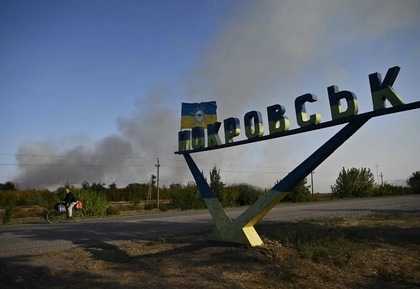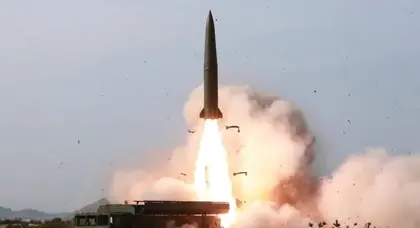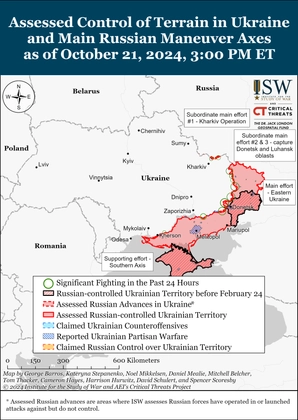John Kirby, US National Security Council Coordinator for Strategic Communications said at a briefing on Jan. 4, 2024, that the United States has information that North Korea has supplied its ballistic missiles to Russia, along with their launchers.
The White House representative emphasized that Russia has not just received the missiles but is already using them against Ukraine.
JOIN US ON TELEGRAM
Follow our coverage of the war on the @Kyivpost_official.
The first attack using North Korean ballistic missiles took place on Dec. 29, 2023, when one fell onto a field in the Zaporizhzhia region.
Later, North Korean missiles were used on Jan. 2, 2024, in a massive strike on Kharkiv where 62 people were injured and two were killed. One of the missiles hit the city’s center.
Most likely, in both cases the Russians used North Korean missiles that differ from those of Russian make.
What kind of missiles could Russia have received?
Ukrainian experts are studying and comparing the fragments of the missiles that were found after the attacks on Dec. 29 and Jan. 2.
According to the preliminary results of the examination, these are not Russian 9M723 missiles. This missile is structurally very similar to the Iskander but has a few differences.
The experts note that the overall diameter of the missile is 10 mm larger than that of the Iskander. The internal winding of the wires also differs. In the Iskander, special shielding to reduce the effect of electronic warfare on the missile protects the electronic parts.
This missile has no shielding, the wires are just inside the case. In addition, Ukrainian specialists noticed markings and inscriptions uncharacteristic of the Russian Federation.

Frontline Ukraine Cafe Offers Glimpse of Normality as War Rages
According to the preliminary conclusions, most likely, Russia received North Korean operational-tactical ballistic missiles KN-23 and KN-24.
It’s important to note that it is in the West that these missiles received the names KN-23 and KN-24, while in their homeland they are called Hwasong-11Ga and Hwasongpho-11Na, respectively.
North Korea is a closed country that is reluctant to share information about its military developments. Therefore, it’s worth realizing that any data on the characteristics of North Korean missiles are approximate and may differ slightly.
North Korea’s official data, as a rule, contain propaganda elements and may overestimate the real characteristics of the missiles. More reliable information can be obtained from South Korea’s radar monitoring reports of North Korea’s missile tests.
The KN-23 (Hwasong-11Ga)
The KN-23 is visually and technically very similar to the Russian Iskander-M. Therefore, one should not exclude the possibility that the Russians shared their efforts and experience gained during the creation of Iskander missiles with North Korea. The maximum recorded launch range of a conventional KN-23 missile is 690 kilometers, which is quite significant.
An additional segment can be installed on the KN-23 missile, which increases its length from 8.7 meters to 9.8 meters (enlarged KN-23 missiles were seen at a military parade in North Korea on Jan. 14, 2021). Probably, such a modification is designed to increase the range of the missile.
The test launch of missiles with an increased range took place in June 2023. At the time, two KN-23 missiles were launched. The first KN-23 flew 850 kilometers, the second missile – 900 kilometers.
According to analysts, the conventional KN-23 has a range of 690 kilometers only if the mass of the warhead is reduced. With the use of a “standard” warhead, the flight range is close to 450 kilometers.
The North Korean KN-23 ballistic missile has a quasi-ballistic flight trajectory that almost completely coincides with the trajectory of the Russian Iskander-M missile: after launch, the missile rises rapidly, reaching a height of 50 to 60 kilometers.
After reaching the apogee, the missile begins to move along the midcourse flight trajectory. At this stage, it can maneuver due to the rudders in the engine nozzle, giving the missile some thrust vectoring capability if the motor is still in operation. This makes it a more difficult target to intercept.
At the end of the midcourse flight, the missile descends rapidly, approaching the target at an angle of about 90 degrees.
To counter such missiles as the KN-23, Ukraine needs a serious anti-missile defense. After all, not all air defense systems can resist ballistic threats. Western Patriot and SAMP/T systems are most suitable for this.
Given the differences between the KN-23 and the Russian missiles, KN-23 missiles probably cannot be launched from the launchers for operational-tactical Iskander missile systems existing in Russia. According to information received from the White House representatives, Russia received several dozen ballistic missiles and the corresponding launchers. In any case, the North Korean KN-23 has similar characteristics and areas of application as the Russian Iskander-M, therefore they should not be underestimated.
The KN-24 (Hwasongpho-11Na)
The second missile, the KN-24, is outwardly similar to the American MGM-140 ATACMS but has several differences.
The first thing that catches your eye is the fixed aerodynamic fins on the KN-24. In ATACMS, they are foldable and deployed from the launch canisters during takeoff. This means that the KN-24 can only be launched from specialized square-shaped launchers.
In addition, the North Korean ballistic missile has a longer range than the American MGM-140 ATACMS. The KN-24 can hit targets up to 410 kilometers away, while the ATACMS has a nominal maximum range of 300 kilometers. This difference in range is because the KN-24 has more fuel, and thus the larger dimensions. The KN-24 is approximately 7 meters long, while the ATACMS is only 4 meters long. This missile can carry a warhead weighing 400-500 kg.
North Korea’s KN-23 and KN-24 ballistic missiles likely share a similar guidance system that includes both satellite navigation and inertial guidance.
The accuracy of these missiles is not known for sure, but they could be less precise than their Russian analogues. The case in Zaporizhzhia region, when a North Korean missile simply fell onto a field, is illustrative. If the missile does not fail before reaching the target, the average deviation of the North Korean KN-23 and KN-24 missiles is likely to be between 100 and 200 meters.
The quality of North Korean weapons sometimes raises doubts even among Russians
Russia has been using mines of various calibers, 152mm and 122mm projectiles, weapons for BM-21 Grad multiple missile launcher systems and other North Korean ammunition for a long time. However, on the internet you can often see how the Russian military complains about the quality of these products.
Some projectiles simply explode in the barrels of guns and tubes of missile launchers. Such an explosion can completely disable the equipment, at least for the time of repair. In some cases, the equipment can be destroyed, along with the crew. Such incidents indicate that the quality of North Korean weapons may be lower than that of Russian analogues.
It’s likely that the Russians will use these missiles during massive missile attacks on Ukraine. For Russia, accuracy is not an important factor in such a scenario. If a missile hits a residential building, the Russian military leadership will not care at all, because the missile at least destroyed something, or distracted Ukraine's air defense systems.
Deliveries from North Korea
Russian ships actively enter the ports of North Korea, where they are loaded with containers. So, it’s possible that North Korea is continuing delivery of arms to Russia.
KN-23 and KN-24
North Korean ballistic missiles
The guidance system in both missiles is combined, including satellite navigation and inertial guidance. The possible circular error of probability from the target is 100-200 m.
The warhead weighs up to 500 kg.
The missile’s total weight is 3.45 tons.
The maximum range is 690 km.
The 9.7-meter-long modified KN-23 has a range of 900 km. It was first tested in 2017.
The KN-23 is derived from the Russian operational-tactical system Iskander-M.
Most likely, developments of other countries were used in the development of the KN-23.
The accuracy of these missiles is not known exactly, but it is probably less than that of Russian analogues. The case in Zaporizhzhia region, when a North Korean missile simply fell onto a field, is illustrative.
The North Korean ballistic missile has a longer range than the American MGM-140 ATACMS. The KN-24 can hit targets up to 410 km away, while the ATACMS has a nominal maximum range of up to 300 km.
This missile can carry a warhead of 400-500 kg.
The KN-24 has more fuel, and thus larger dimensions. The KN-24 is approximately 7 meters long, while the ATACMS is 4 meters long.
The KN-24 is outwardly similar to the American MGM-140 ATACMS but has several important differences.
You can also highlight the text and press Ctrl + Enter






